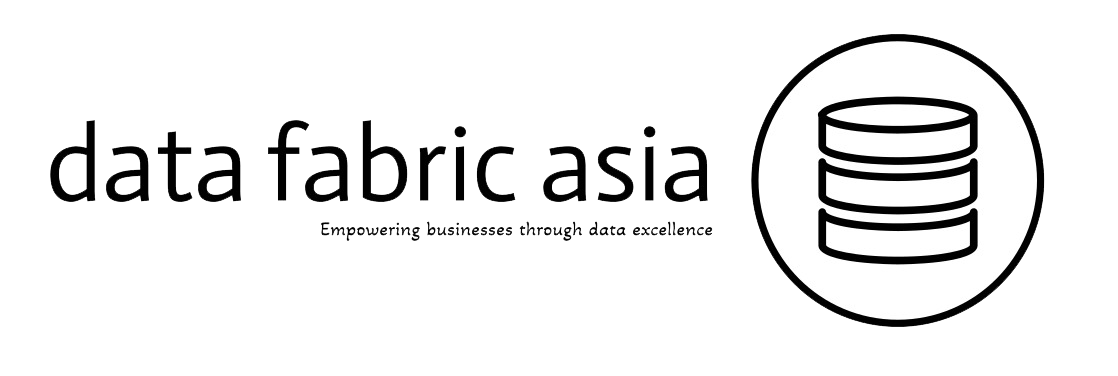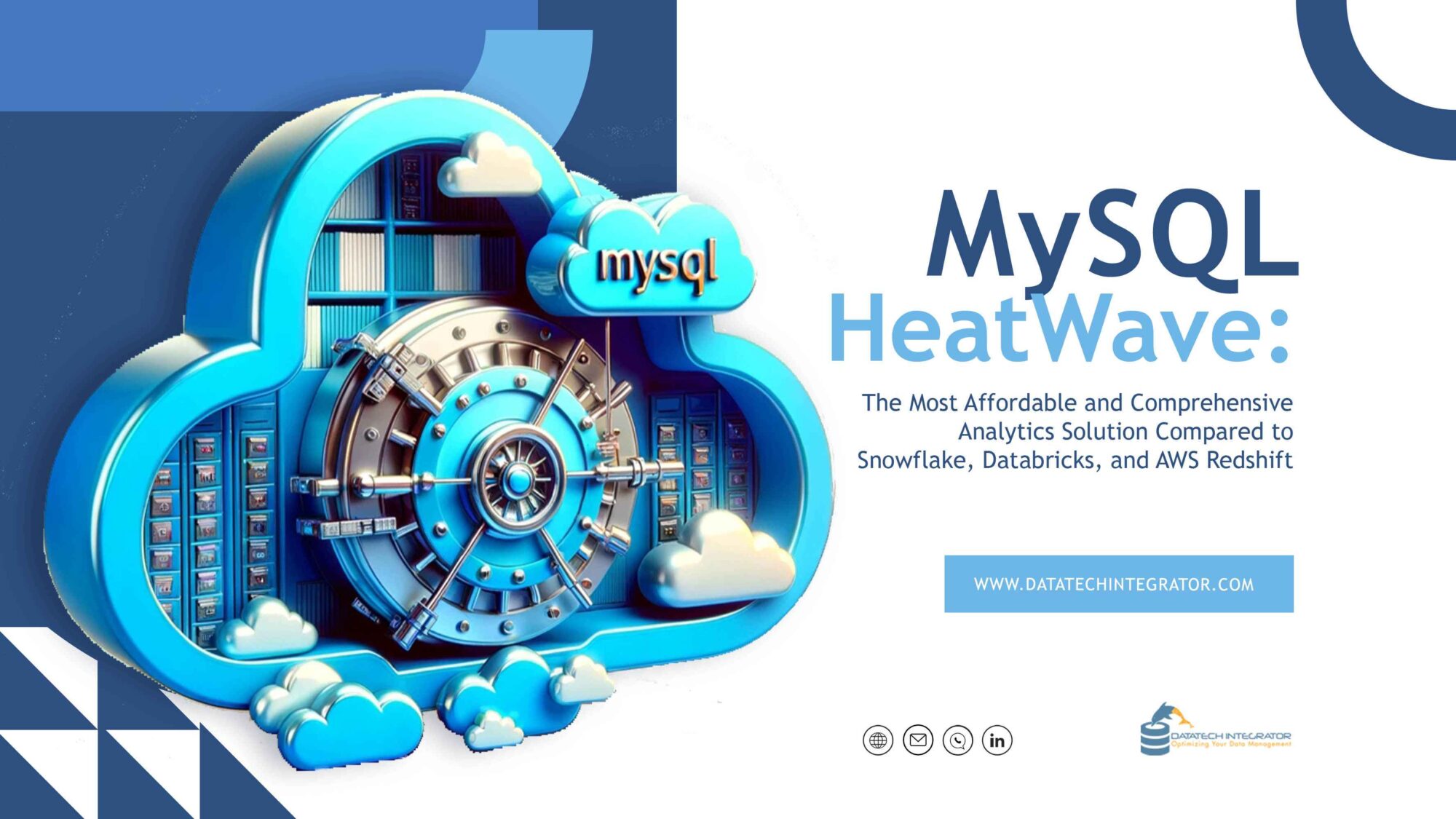In today’s data-driven world, businesses are continuously seeking robust and cost-effective analytics platforms that enable them to gain actionable insights from vast amounts of data. The right analytics solution can empower organizations to make data-driven decisions, optimize operations, and maintain a competitive edge in their industries. Among the leading cloud-based analytics platforms, MySQL HeatWave has emerged as a game-changer, offering unparalleled affordability and performance when compared to other giants in the field like Snowflake, Databricks, and AWS Redshift.
In this article, we will explore why MySQL HeatWave stands out as the most affordable and comprehensive analytics solution, diving into its cost advantages, unique features, and performance metrics. We will also compare MySQL HeatWave with Snowflake, Databricks, and AWS Redshift, providing insights into how each platform stacks up in terms of pricing, capabilities, and use cases.
The Rise of Cloud-Based Analytics Platforms
The rapid growth of big data and the increasing need for real-time analytics have driven the adoption of cloud-based analytics platforms. These platforms enable organizations to process, analyze, and visualize massive datasets without the need for costly on-premises infrastructure. Among the most popular options are Snowflake, Databricks, AWS Redshift, and MySQL HeatWave, each offering unique features tailored to different business needs.
However, as businesses grow and data volumes increase, the cost of analytics can quickly spiral out of control. This is where MySQL HeatWave shines, offering a highly affordable solution that doesn’t compromise on performance or scalability.
Cost Advantage: MySQL HeatWave vs. Snowflake, Databricks, and AWS Redshift
One of the most significant factors that set MySQL HeatWave apart from its competitors is its cost-effectiveness. When evaluating the total cost of ownership (TCO) for an analytics platform, several elements must be considered, including compute and storage costs, data transfer fees, licensing fees, and administrative overhead. MySQL HeatWave consistently outperforms its competitors in this regard, offering significant cost savings across the board.
1. Compute and Storage Costs
MySQL HeatWave’s integrated architecture allows for seamless execution of OLTP (Online Transaction Processing) and OLAP (Online Analytical Processing) workloads on a single platform. This integration reduces the need for data movement between different environments, which can be costly in terms of both time and resources. Additionally, MySQL HeatWave’s in-memory processing engine is highly optimized for performance, reducing the number of compute resources required to achieve high-speed analytics.
In contrast, platforms like Snowflake, Databricks, and AWS Redshift often require separate environments for different workloads, leading to higher compute and storage costs. For example, Snowflake operates on a multi-cluster shared data architecture that can lead to over-provisioning of compute resources, driving up costs. Databricks, while powerful for data engineering and machine learning, requires significant compute resources to handle large-scale analytics, particularly when using its Spark-based engine. AWS Redshift, while optimized for data warehousing, can also become expensive as data volumes grow and more nodes are required to maintain performance.
2. Data Transfer Fees
Data transfer fees can be a hidden cost in cloud-based analytics platforms, especially when moving data between different regions or services. MySQL HeatWave minimizes these costs by eliminating the need for data movement between OLTP and OLAP environments, as both workloads are handled within the same platform. This is a stark contrast to Snowflake and AWS Redshift, which may incur significant data transfer fees when moving data between different services or regions.
3. Licensing Fees and Administrative Overhead
MySQL HeatWave is built on the open-source MySQL database, which is renowned for its affordability and flexibility. The licensing fees for MySQL HeatWave are significantly lower than those of proprietary platforms like Snowflake and Databricks, making it an attractive option for businesses of all sizes. Additionally, MySQL HeatWave’s integrated architecture simplifies management and reduces administrative overhead, further lowering the total cost of ownership.
Performance and Scalability: A Comparison
While cost is a critical factor in choosing an analytics platform, performance and scalability are equally important. MySQL HeatWave excels in these areas, offering high-speed analytics that can scale to handle large datasets without compromising on performance.
1. Performance Benchmarks
MySQL HeatWave has consistently outperformed its competitors in benchmark tests, particularly in TPC-H, a standard benchmark for evaluating the performance of data warehouse systems. In a recent benchmark comparison, MySQL HeatWave demonstrated up to 7 times better price-performance than Snowflake, and up to 10 times better price-performance than AWS Redshift. This is due to its in-memory, massively parallel processing (MPP) architecture, which allows for rapid query execution and real-time analytics.
Databricks, while powerful for machine learning and big data processing, often falls short in terms of pure analytics performance when compared to MySQL HeatWave. This is because Databricks’ Spark-based engine is optimized for distributed computing rather than high-speed analytics, leading to longer query execution times and higher compute costs.
2. Scalability
MySQL HeatWave’s architecture is designed to scale seamlessly as data volumes grow, without requiring significant changes to the underlying infrastructure. This is particularly advantageous for businesses experiencing rapid growth or dealing with fluctuating data volumes. In contrast, AWS Redshift requires the addition of more nodes to handle increased data volumes, which can lead to higher costs and increased complexity in managing the environment.
Snowflake, while scalable, can also become costly as data volumes increase due to its multi-cluster architecture. Databricks, on the other hand, may require additional compute resources and clusters to scale effectively, leading to higher costs and potential performance bottlenecks.
Unique Features of MySQL HeatWave
In addition to its cost and performance advantages, MySQL HeatWave offers several unique features that further differentiate it from its competitors.
1. Integrated OLTP and OLAP
One of the standout features of MySQL HeatWave is its ability to handle both OLTP and OLAP workloads on a single platform. This integration eliminates the need for data replication and movement between different environments, reducing complexity and cost. Businesses can run real-time analytics on their transactional data without the need for separate data warehouses or ETL (Extract, Transform, Load) processes.
2. In-Memory Processing
MySQL HeatWave leverages in-memory processing to deliver lightning-fast query execution. By storing data in memory, HeatWave minimizes disk I/O operations, which are often a bottleneck in traditional analytics platforms. This results in significantly faster query performance, particularly for complex analytical queries.
3. Automatic Scaling and Load Balancing
MySQL HeatWave’s automatic scaling and load balancing capabilities ensure that resources are allocated efficiently based on workload demands. This not only improves performance but also reduces the risk of over-provisioning resources, which can lead to unnecessary costs.
4. Security and Compliance
Security is a top priority for any cloud-based analytics platform, and MySQL HeatWave is no exception. The platform offers advanced security features such as data encryption, access control, and audit logging to ensure that sensitive data is protected at all times. Additionally, MySQL HeatWave is compliant with major industry standards and regulations, making it a trusted choice for businesses in highly regulated industries.
Use Cases: When to Choose MySQL HeatWave Over Snowflake, Databricks, and AWS Redshift
MySQL HeatWave is particularly well-suited for businesses looking for an affordable, high-performance analytics platform that can handle both OLTP and OLAP workloads. Here are some scenarios where MySQL HeatWave is the ideal choice:
1. Small to Medium-Sized Businesses (SMBs)
For SMBs with limited budgets, MySQL HeatWave offers an affordable solution that doesn’t sacrifice performance or scalability. The lower licensing fees, combined with reduced administrative overhead and data transfer costs, make it a cost-effective option for businesses looking to gain insights from their data without breaking the bank.
2. Real-Time Analytics
Businesses that require real-time analytics on transactional data will benefit from MySQL HeatWave’s integrated OLTP and OLAP capabilities. The ability to run real-time queries on live data without the need for data replication or ETL processes can provide a significant competitive advantage.
3. Cost-Conscious Enterprises
Enterprises looking to optimize their analytics spend will find MySQL HeatWave to be a compelling option. The platform’s superior price-performance, combined with its ability to handle large datasets efficiently, makes it an attractive choice for organizations seeking to maximize their return on investment.
4. Industries with Regulatory Requirements
For industries with strict regulatory requirements, MySQL HeatWave’s advanced security features and compliance with industry standards provide peace of mind. The platform’s robust security measures ensure that sensitive data is protected, while its compliance with regulations like GDPR and HIPAA makes it a trusted choice for businesses in healthcare, finance, and other regulated industries.
Conclusion: MySQL HeatWave – The Future of Affordable Analytics
As businesses continue to navigate the complexities of big data and real-time analytics, the need for a cost-effective and high-performance analytics platform has never been greater. MySQL HeatWave stands out as the most affordable and comprehensive solution on the market, offering significant cost savings without compromising on performance or scalability.
Compared to industry giants like Snowflake, Databricks, and AWS Redshift, MySQL HeatWave offers superior price-performance, integrated OLTP and OLAP capabilities, and advanced features that make it the ideal choice for businesses of all sizes. Whether you’re a small business looking to gain insights from your data or a large enterprise seeking to optimize your analytics spend, MySQL HeatWave provides a powerful, affordable, and future-proof solution that can help you stay ahead of the competition.
Contact us for a no-strings-attached session to learn more about MySQL HeatWave by filling out the form at https://www.datafabricasia.com or dropping an email at ricky.s@datafabricasia.com

